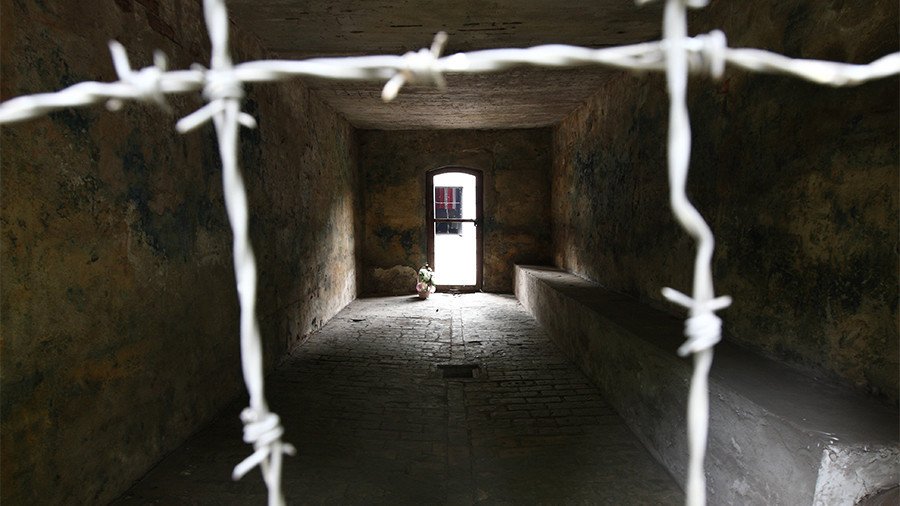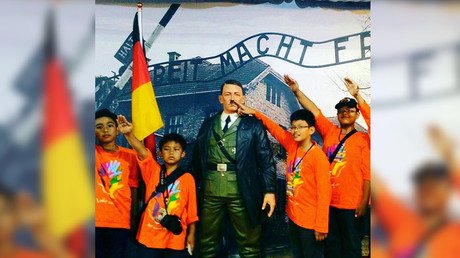'Art' video of naked tag game in Polish ex-Nazi camp has Jewish groups demanding answers

Outraged Jewish rights groups have penned a letter to the Polish president, demanding an explanation for a bizarre naked “game of tag” art performance inside a former concentration camp's gas chamber.
The 5-minute video (WARNING: EXPLICIT CONTENT), titled “Game of Tag,” shows several men and women, all stark naked, running and laughing in a concrete dungeon resembling a gas chamber. The title on the video says that it was filmed in “two different locations: in the basement of a private home and in a gas chamber of one of the former concentration camps.”
The video was filmed in 1999 by Artur Zmijewski, but has returned to the headlines after activists tracked down the exact location of the filming: the Stutthof concentration camp, east of the city of Gdansk.
In 2015, the "performance" courted controversy when it became a part of an exhibition reflecting on the impact the concentration camps left on Polish, Jewish and German societies.
The exhibition was held at the Museum of Contemporary Art in Krakow and was endorsed by the Israeli embassy in Poland, which requested the removal of the controversial “art piece” shortly after it sparked outrage. The call was supported by numerous Jewish groups, who denounced the film as “revolting” and the “most disgusting” and immoral thing, according to the Wiesenthal Center’s Efraim Zuroff.
The video “causes extraordinary anguish to Auschwitz survivors to whom the Holocaust is not a remote event in history, but rather serves as an enduring warning about the dangers of anti-Semitism, racial hatred and xenophobia,” The Times of Israel cited World Jewish Congress President Ronald Lauder as saying at the time.
However, while the museum initially pledged to pull the video, the only thing it did was limit access to the work, which remained a part of the exhibition being displayed in a specially built enclosure with the disclaimer, “Only for adult viewers.”
Defending its decision, the museum said that visitors should decide for themselves if they want to watch the performance, arguing that the video should not be taken as an insult, and is just a way to rekindle a discussion about the suffering of the Jews at the hands of Nazis.
A number of prominent Jewish groups, including the Organization of Holocaust Survivors in Israel and the Simon Wiesenthal center, appealed to Polish President Andrzej Duda on Wednesday to reveal if the Polish government was aware of the filming and whether the artist was given the go-ahead by the local authorities, the Times of Israel reported, citing a letter they sent to Duda’s office. The activists also asked if there are applicable rules that regulate proper conduct at the site and whether the circumstances of the filming were subject to investigation by the authorities.
The Stutthof concentration camp was established in September 1939 and functioned until it was liberated by the Allies on Victory Day: May 9, 1945. Between 1939 and 1945, some 65,000 people, including 28,000 Jews, were exterminated there or died due to the dire conditions in the camp.














